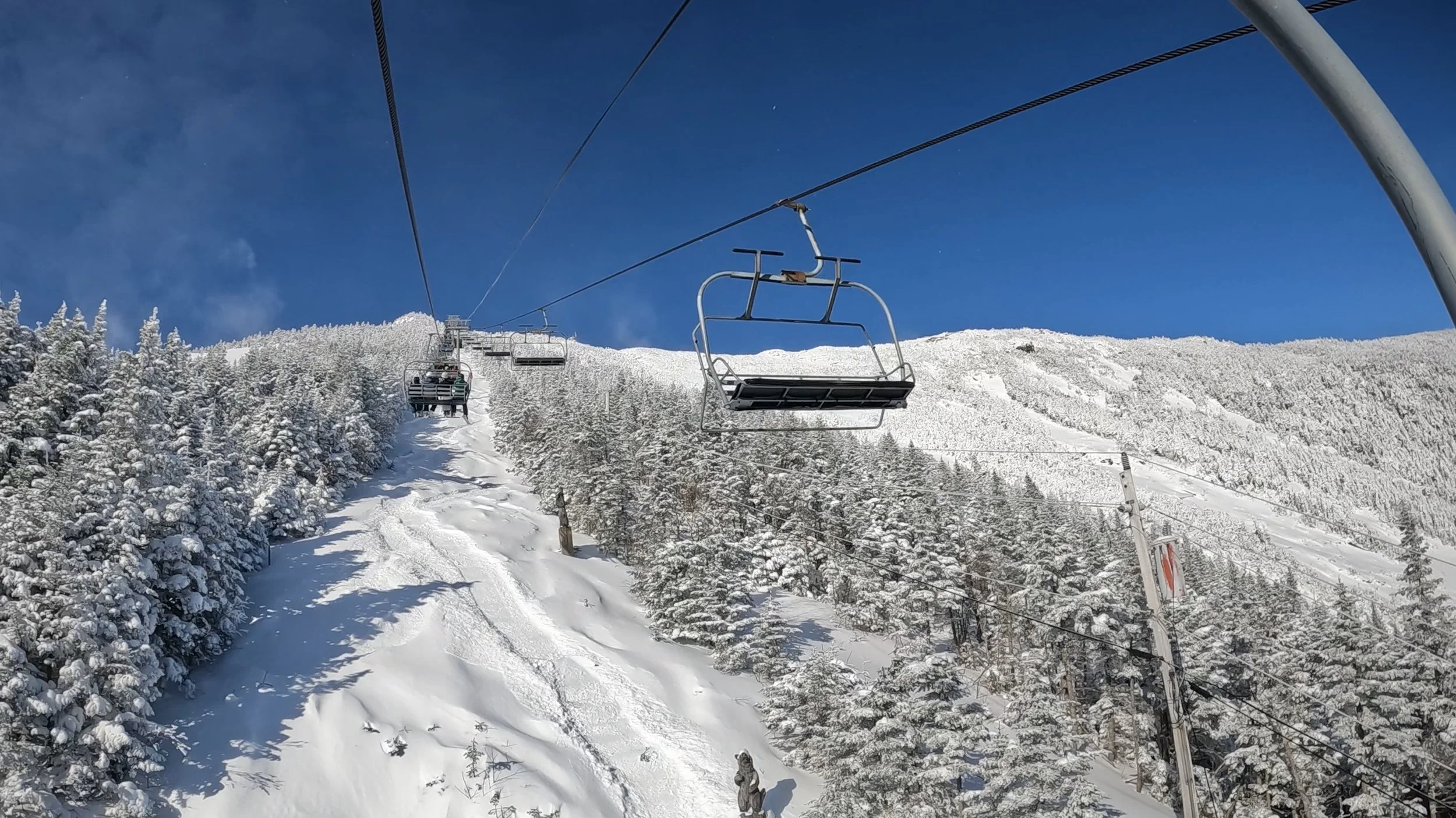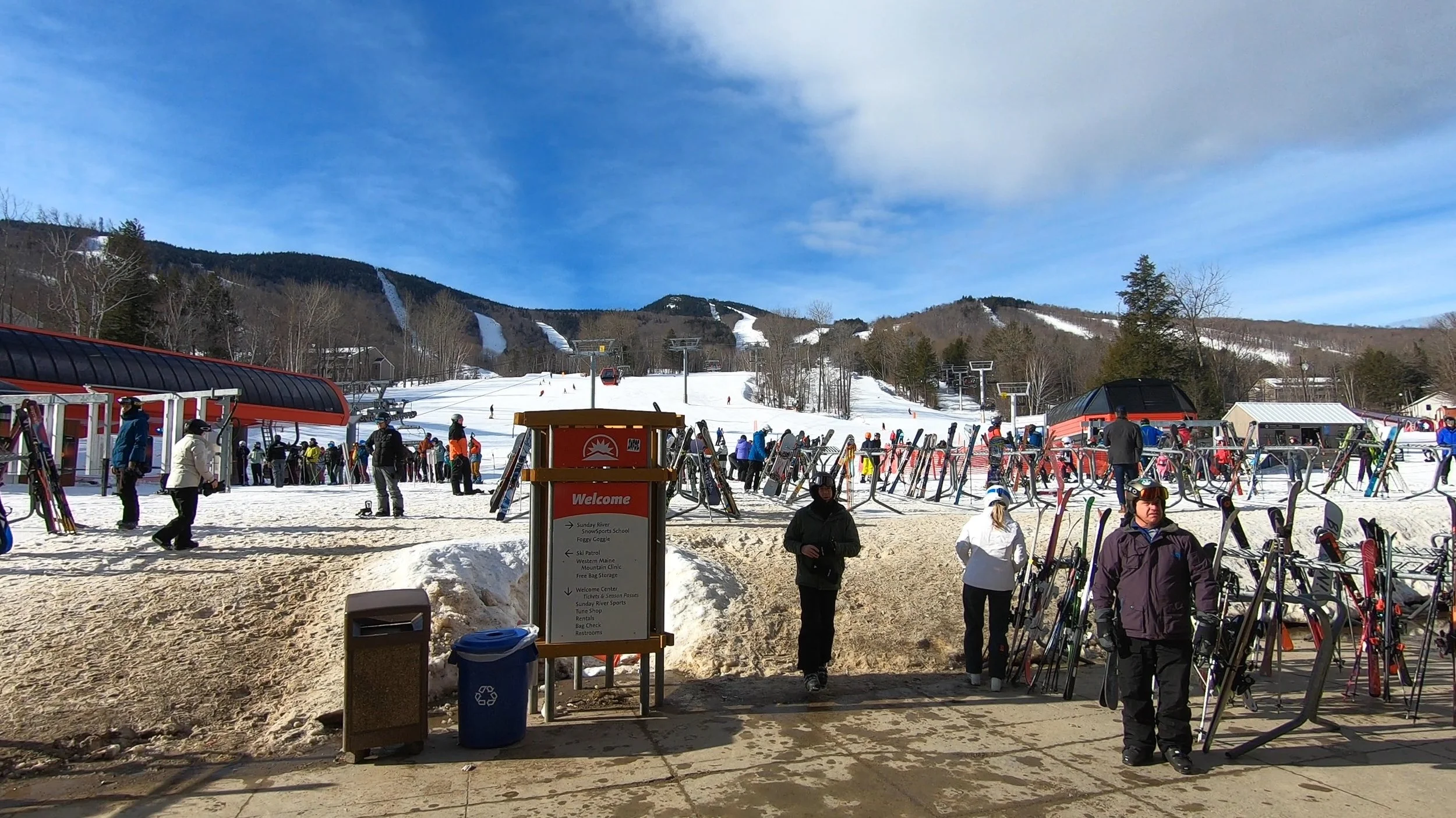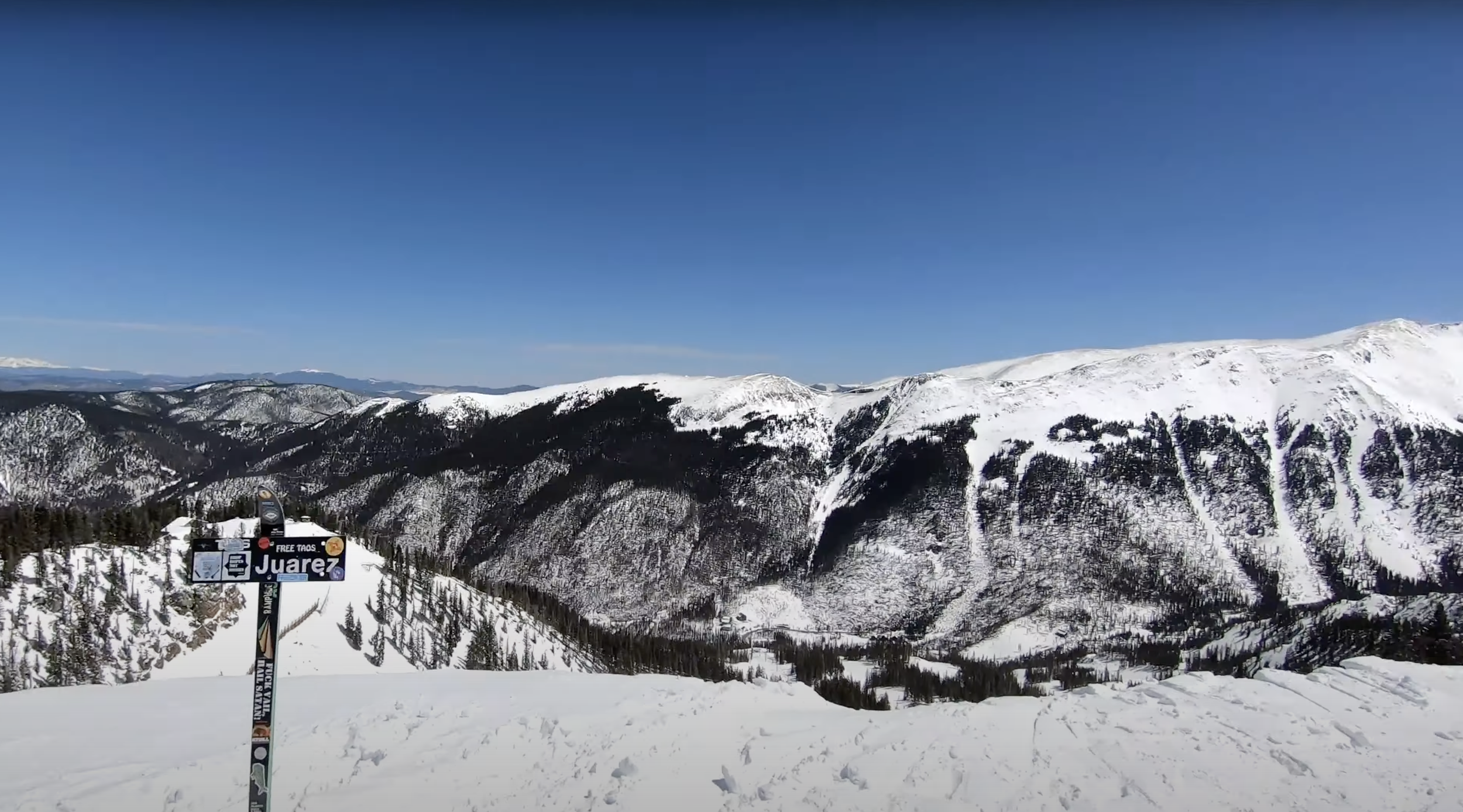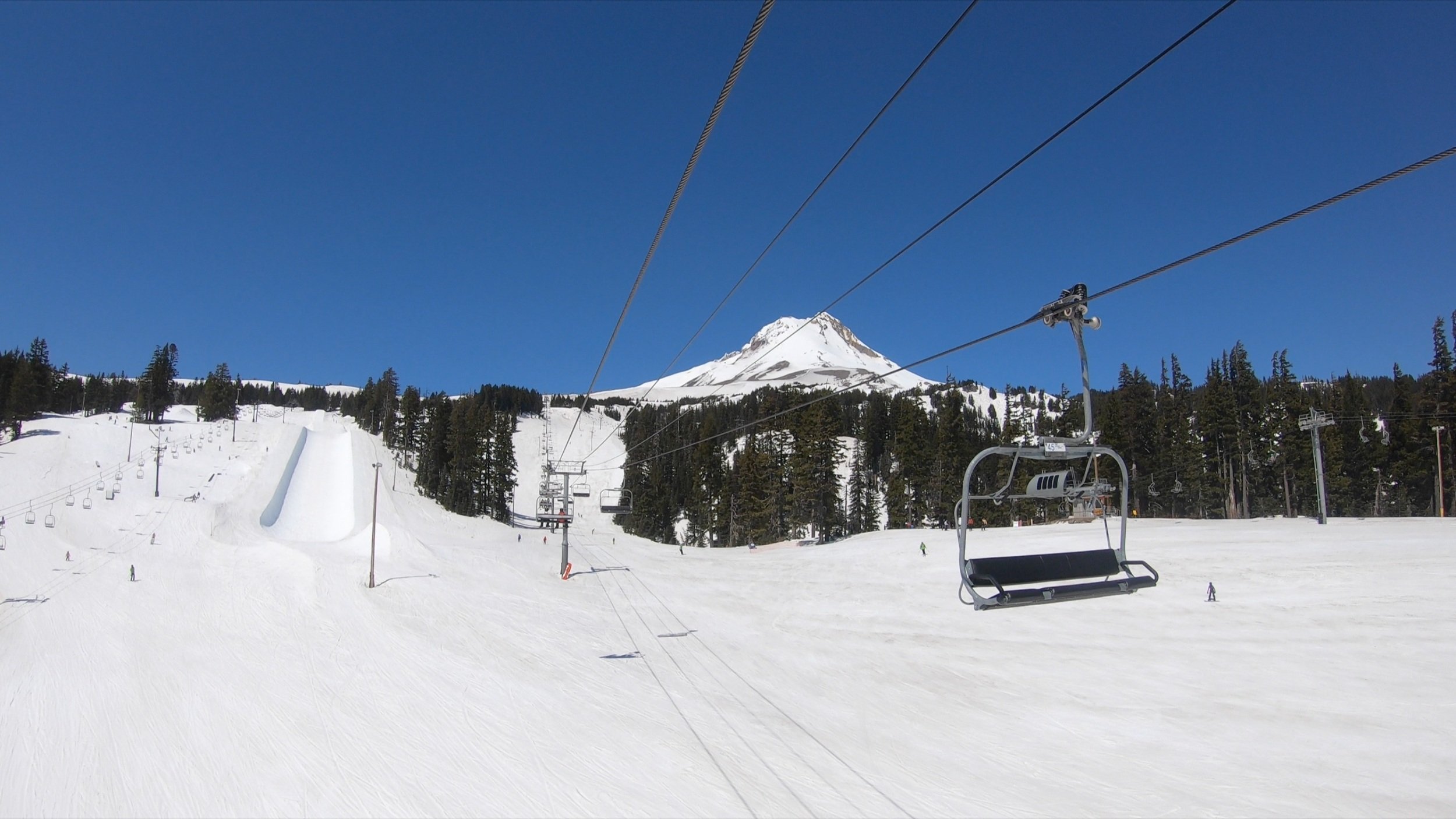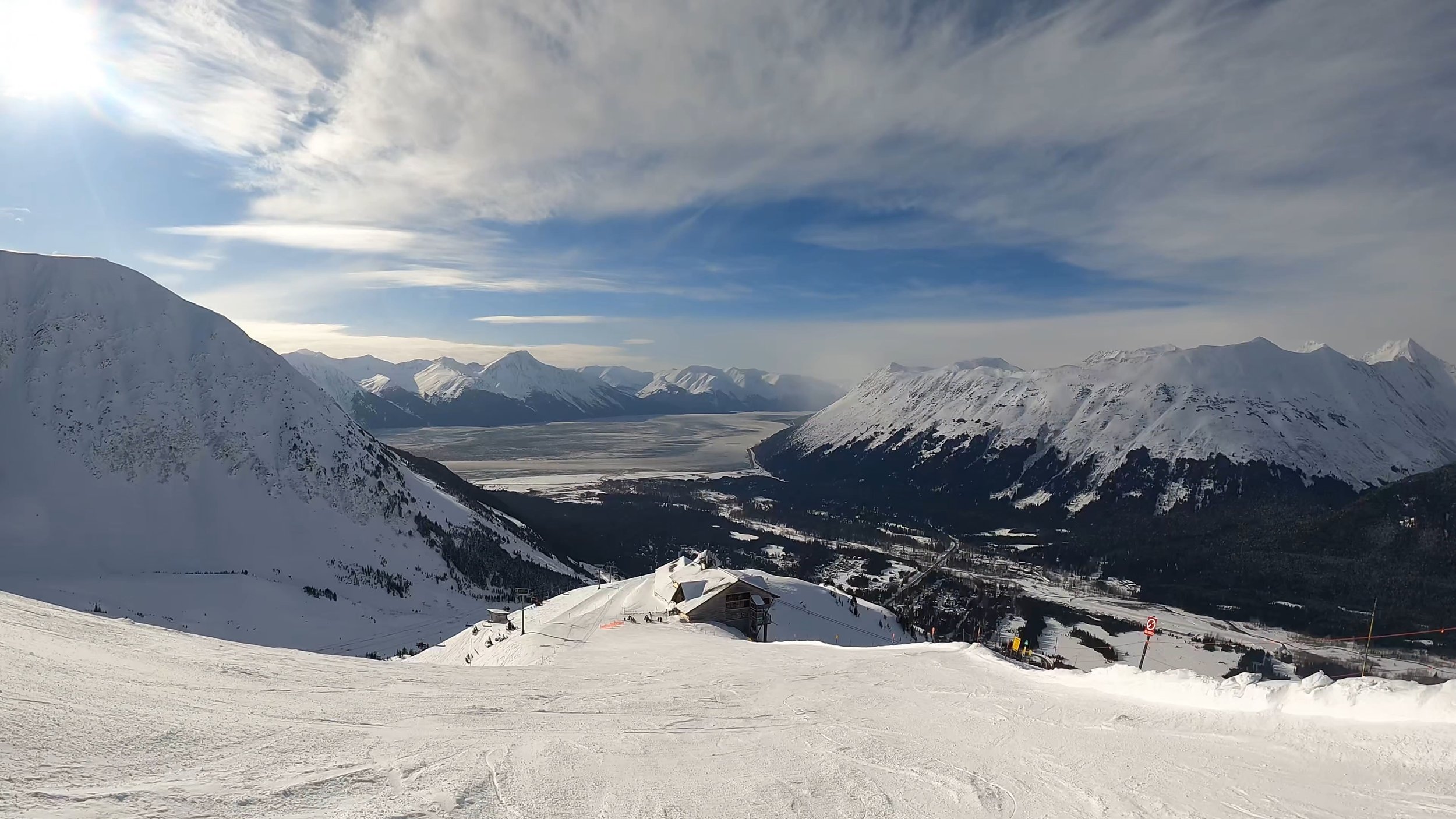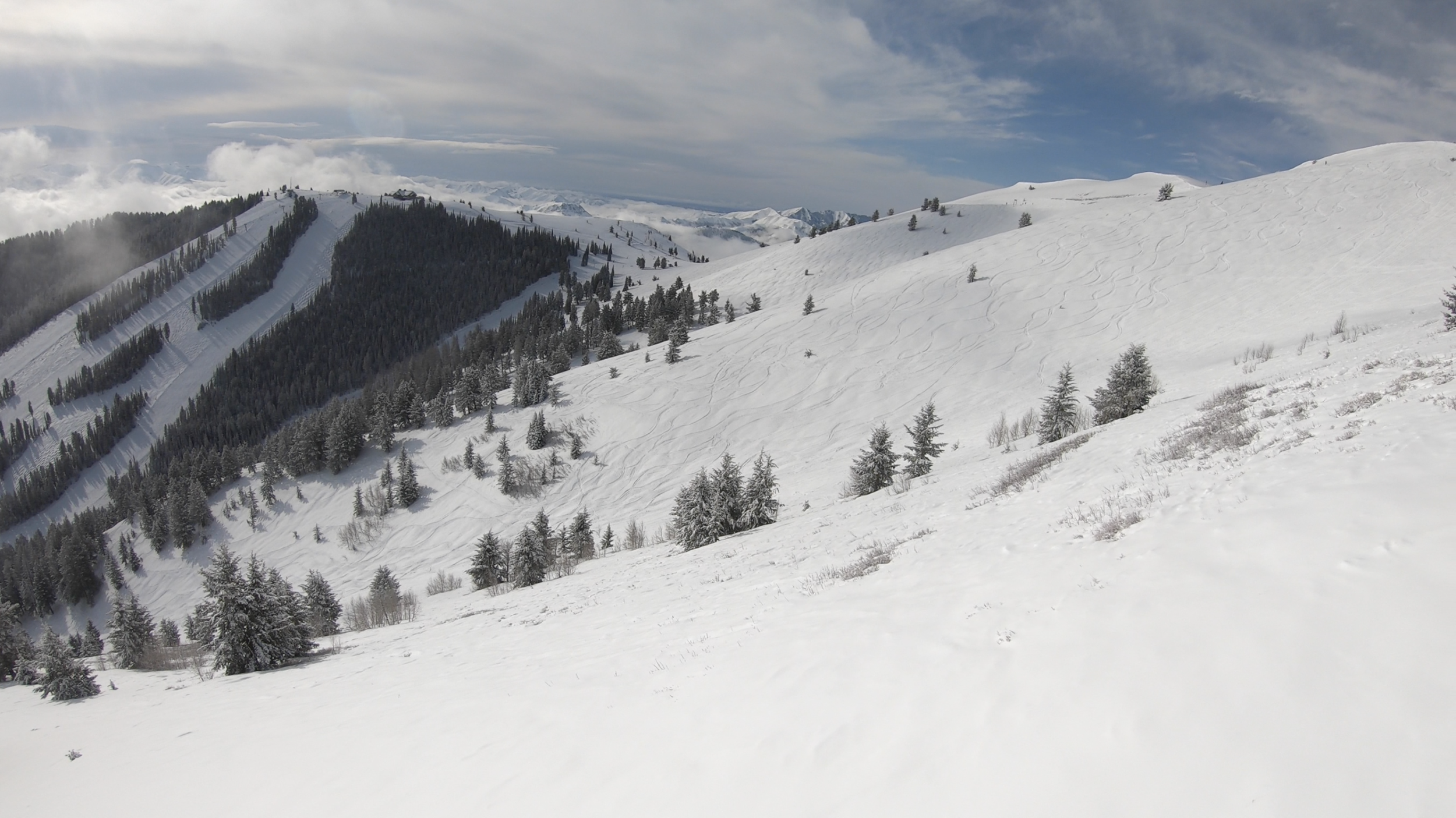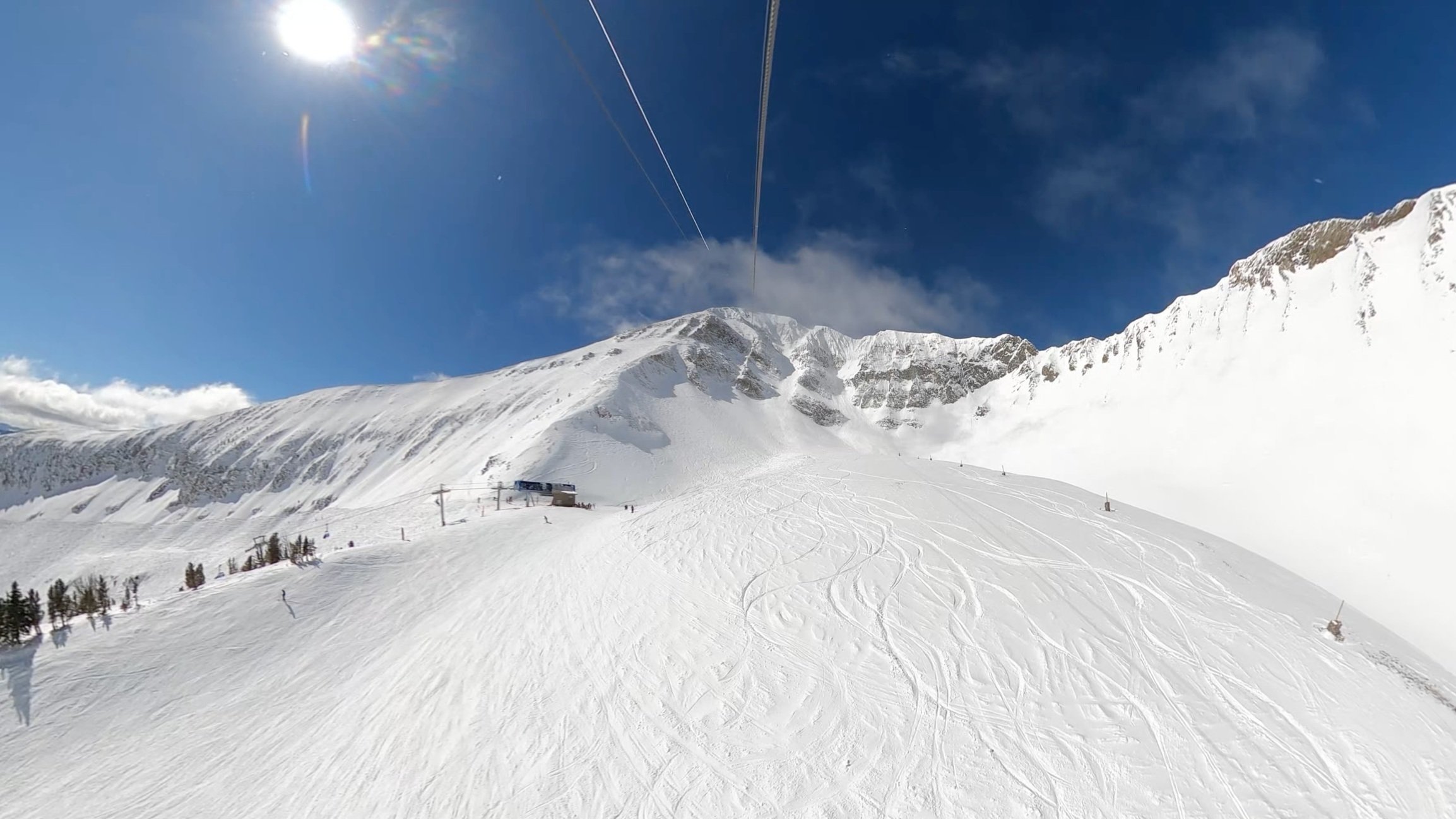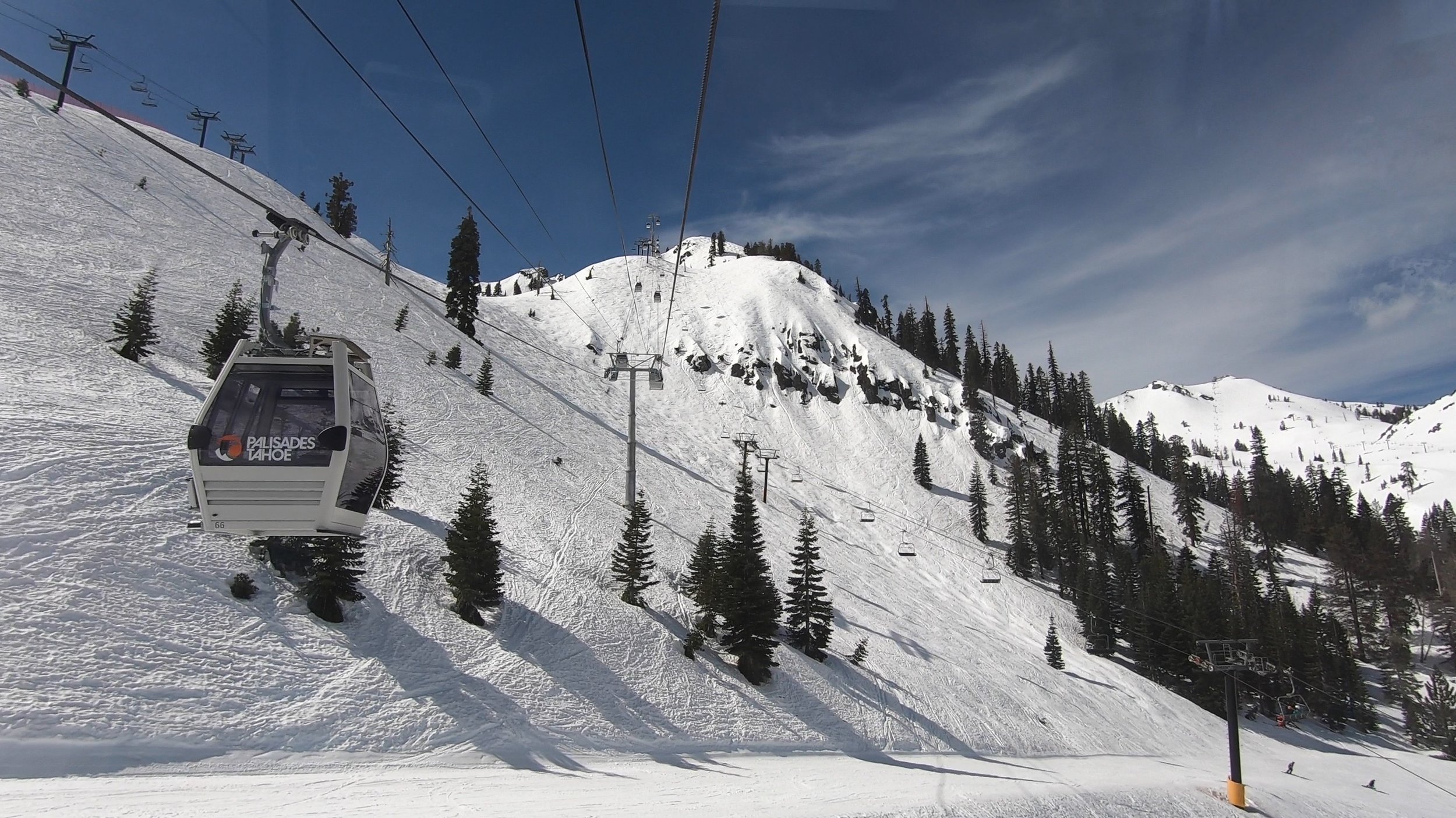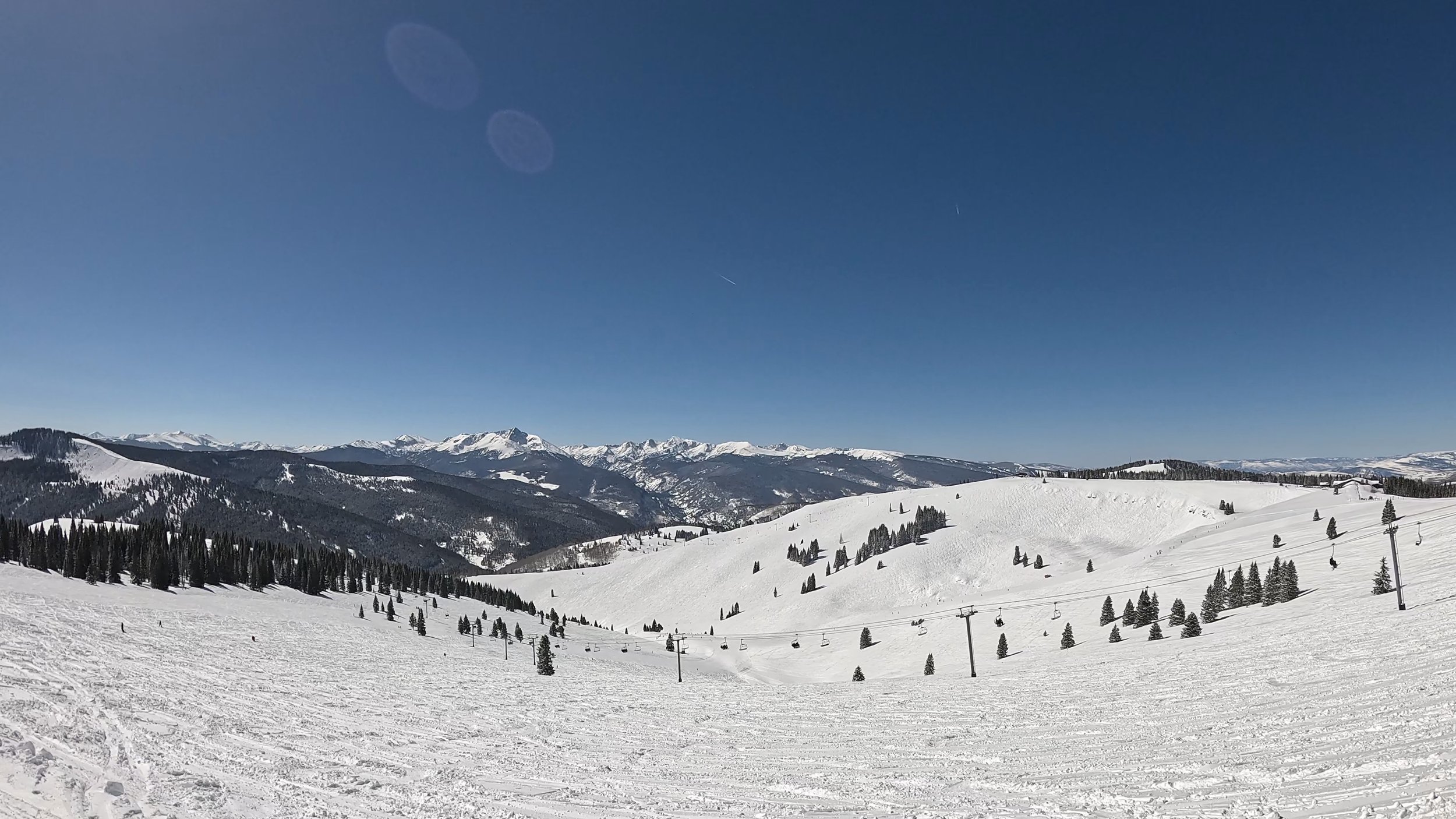USA Ski States Ranked: 2025-26
When it comes to skiing and riding in the United States, there are a ton of states to choose from. And this can be more relevant than you think when you’re actually planning a vacation; sometimes one resort isn’t enough, and you might want to cover multiple mountains in the same states to really make the most of the vacation you traveled so far to take. And it turns out that out of the 50 states, quite a few of them have some surprisingly respectable ski resorts. So which U.S. states offer the best combination of quality and quantity of ski slopes? In this video, we’ll rank the U.S. states based on overall ski resort experience, and we’ll highlight the advantages and drawbacks of skiing or riding in each one.
To keep this article to a reasonable length, we’re limiting the list to the top 15 states. Here are a few honorable mentions that have good regional mountains but didn’t quite make the cut:
Minnesota
South Dakota
Michigan
Arizona
West Virginia
Massachusetts
Pennsylvania
#15: New York
Guess which U.S. state has the most ski areas? Turns out it’s actually New York. With over 50 ski areas ranging from actual Olympic venues to tiny rope tow parks, New York has a much wider variety of places to ski or snowboard than one might expect. Northern New York resorts in the Adirondacks offer competitive vertical drops and genuinely unique terrain, while Western New York places like Peek’n Peak, Holiday Valley, and Snow Ridge get plenty of Lake Effect snow from Lake Erie and Lake Ontario, making for some of the best natural conditions one can find in the East.
However, while some of New York’s ski resorts offer impressive snow and others offer pretty cool terrain, you’re not really going to find a combination of both under normal circumstances, with the Western New York mountains lacking competitive vertical drops and resorts in the Adirondacks falling a bit short in terms of snow totals. In addition, while there are tons of ski areas spread across the state, significant wilderness preservation efforts, especially in the Adirondacks, mean that even its biggest ski resorts aren’t all that sizable when it comes to practical in-bounds skiable terrain.
Finally, New York’s most competitive resorts terrain-wise entirely lack on-site lodging, making them less appealing for those looking for a hassle-free vacation. Overall, the Empire State has tons of ski areas spread across its footprint, but they lack the combination of snow and terrain to beat out other states on this list.
#14: Maine
Next up on this list we have Maine, which is home to the Northernmost ski resorts on the U.S. East Coast. Maine stands out regionally with three signature resorts—Sugarloaf, Sunday River, and Saddleback—that offer sizable terrain footprints and excellent snow retention for this area of the country. The well-preserved snow also gives way to some decidedly unique terrain, with sidecountry-style woods and even small above-treeline snowfields at Sugarloaf, incredible frozen lake views at Saddleback, and great glade terrain all around.
But skiing here comes with some drawbacks. Despite generally strong retention, raw snowfall totals lag behind other states in the Northeast. In addition, while its top resorts have some impressive lifts, resort infrastructure on the whole is a bit lacking compared to the best states on this list. And perhaps most importantly, beyond the big three, the state’s other hills hold snow well but aren’t particularly compelling. Maine offers a few sizable and character-rich ski resorts for the East, but they’re not enough to beat out the other states on this list.
#13: New Hampshire
Next up, we move over to Maine’s only neighboring U.S. state, New Hampshire. New Hampshire stands out for its raw quantity of ski resorts; in the White Mountain region within the central part of the state, there are six reasonably-sized ski resorts within a 90-minute drive of one another, and several additional smaller ones within that range as well. New Hampshire’s resorts also offer competitive elevation and vertical drops for the East Coast, and they are practical to reach thanks to their quick travel time from Boston. And finally, thanks to their proximity to Mount Washington and Franconia Notch, many New Hampshire ski resorts offer incredible scenery.
However, none of New Hampshire‘s ski resorts are all that big. Not a single one of them spans more than 500 acres, meaning the biggest resort in this state is only half the size of its neighbors to its east and west. In addition, New Hampshire’s tallest mountains are too extreme to allow for resort skiing, and the ones that do provide for skiing conditions don’t get the same snowfall as neighboring Vermont, and are often susceptible to heavy winds and scoured slopes. Finally, on-site lodging at the best resorts is limited compared to some of the other states on this list, and crowds can be tough at most resorts on weekends. New Hampshire has the vertical and the views to make for a solid one or two day trip, but other states are just more well-rounded for longer vacations.
#12: New Mexico
Moving onto what’s perhaps one of the most unexpected ski states, New Mexico offers sunny slopes, surprising snow quality, and decently varied terrain across its nine ski areas. New Mexico’s best known ski resort is arguably Taos Ski Valley, with a jagged footprint that makes for some of the most difficult ski terrain on the continent. But New Mexico isn’t just cliffs and steep trees, and ski areas across the state offer terrain for all abilities. Finally, New Mexico’s ski resorts sit in an exceptionally high and dry climate, and the mountains in the state receive some of the lightest snow in the country thanks in large part to this unique circumstance.
However, skiing this far south does come with some notable drawbacks. First off, New Mexico’s snow line is higher than states further north, and ski resorts tend to sit at particularly high base altitudes versus the rest of the country, with some mountains that have base areas of over 10,000 feet. This can be especially taxing for those not used to high elevation environments. Additionally, New Mexico’s ski areas tend to be on the modest side in terms of overall footprint, especially compared to neighboring states, and while some resorts have standout expert terrain and others are family-friendly, they’re rarely both at the same time. And although there have been some significant improvements in recent years, lift infrastructure at New Mexico ski resorts tends to be a bit less modern than in other states. Finally, and perhaps most importantly, New Mexico’s variable weather means snow conditions can be much more hit or miss than in other states. You could find yourself in an incredible powder environment, but you could also find your resort struggling to even stay open.
If you’re looking for dry snow, sunny days, high elevation terrain, and green chiles on every meal, New Mexico skiing won’t let you down, provided you stay long enough. But if you’re weary of inconsistent conditions, want a bigger skiable footprint, and, most importantly, want a truly reliable experience, other states will be better.
#11: Vermont
Topping the list for non-western states is Vermont, home to some of the largest and best-known ski areas east of the Mississippi River. Vermont is home to some of the snowiest areas in the East, with headliners like Stowe, Smugglers Notch, and Jay Peak offering snow totals that aren’t far off many western areas. In addition, Vermont is home to many larger ski areas such as Killington, Okemo, and Stratton, making for a surprising number of resorts that can take well more than a weekend trip to effectively cover. But Vermont isn’t lacking for smaller slopes spread across the state either; in fact, from any location in the state, you’re never more than an hour from a ski area.
However, the reason Vermont isn’t higher on this list is that it can’t escape all the fundamental drawbacks of its East Coast location. While snow totals are on par with many ski areas out west, freeze-thaw cycles and even rain can occur during the winter, making for ice, bare spots, and just generally less than ideal conditions. In addition, while Vermont does have some sizable resorts, they’re still nowhere near the size of the biggest destinations in states west of the Mississippi. Ultimately, Vermont is the king of the East, but its resort roster still isn’t quite strong enough to earn it a place in our top 10.
#10: Nevada
Next up we have a state that’s perhaps better known for gambling than skiing, and that’s Nevada. Nevada, along with neighboring California, is one of the two states that include pieces of Lake Tahoe, and the best resorts in the state include the impressive views and comfortable weather that the region is known for. Nevada also offers skiing and riding close to Vegas thanks to Lee Canyon, and when you pair that with the Tahoe area’s proximity to Reno and Carson City, the vast majority of Nevada’s population lives within only an hour or two of a ski resort.
However, with the exception of the mountains immediately bordering Lake Tahoe, the locally-oriented Lee Canyon, and a minuscule and sporadically open hill in Elko, lift-served ski resorts in Nevada are nonexistent. And the only one of these big enough to really attract fly-to destination-goers is Heavenly, but only half of that resort is actually in Nevada, with the other half—and arguably the side with better lake views—sitting just across the border in California. So Nevada does have some pretty awesome skiing and riding, but the reality is it’s too segmented to an extremely specific part of the state (and one could even argue just half of one resort) to earn it a higher spot on this list.
#9: Oregon
The first Pacific Northwest state on this list, Oregon offers substantial snowfall, massive skiable acreage, and uniquely diverse terrain across its ten ski areas. The crown jewels of Oregon skiing and riding are its volcanoes; Mount Bachelor hosts a gigantic 360-degree skiable footprint, and Mount Hood hosts multiple ski areas on it, including Timberline Lodge, which consistently boasts the longest ski season in the country. That long season is partially thanks to the substantial snowfall, which can top well over 500 inches for the volcano resorts during good seasons, but it’s also thanks to the heavy snow quality, which tends to stick around exceptionally long through the spring. In fact, all of Oregon’s major resorts tend to operate the vast majority of their footprints well into April. While other areas in the state such as Willamette Pass, Mount Ashland, and Hoodoo offer smaller slopes and less annual snowfall, they allow skiers and riders in many less volcano-ey parts of the state to have easier access to the slopes.
However, Oregon has a huge Achilles heel when it comes to its ski resorts, and that’s reliability. The volcano-driven weather cycles are relentless, regularly bringing severe wind, ice, and low visibility throughout the season. The state’s best resorts are some of the most fickly open in the country during the core winter months, with slopes above treeline especially susceptible to weather-related shutdowns for days or even weeks on end. And even ignoring these less than ideal opening schedules, slopes can be wind blown and hard packed in the places that are less sheltered by trees. While the smaller resorts are generally more reliable, the wet and heavy nature of the state’s snow can make for arduous conditions to ski or ride through across the board. Finally, on-site lodging is very limited in Oregon, with only Timberline Lodge having accommodations of the major resorts—and a single and pricey (albeit notably historical) one at that. Overall, Oregon skiers and riders have access to some of the largest and snowiest mountains in the country, but they are just way too inconsistent and inconvenient as destinations to compete with the top U.S. states.
#8: Washington
Next up, we move to Oregon’s northerly neighbor, Washington state. Washington stands out for the sheer quantity of snow—in fact, Mount Baker Ski Area is known for getting some of the highest snowfall totals in the world in certain seasons, and has even recorded one year with over 1,000 inches of snow. Washington state also stands out decently for terrain variety, with a mix of below-treeline cruisers, glades, and bowls, and for adventure seekers, some surprisingly extreme terrain as well. Notably, since Washington’s ski resorts aren’t on volcanoes—although many of them border the stunning Mount Rainier—they tend to be significantly more reliable in terms of openings than those in Oregon, and they also tend to benefit from very strong snow retention, leading to long seasons that extend well into the spring. Finally, Washington’s ski resorts are reasonably well dispersed across the state, and while many of them are in the Cascades in the west-central part of the state, there are also some decently strong resorts in the northeastern part of the state.
However, while Washington has a number of enjoyable ski resorts, they lack the vertical drop and size of most of the states higher up on this list. In addition, while Washington has very strong snow quantities each winter, the quality of that snow is very wet and heavy and not always enjoyable. Especially in December and January, it’s common to see rain at the resorts in lower-elevation areas. Low-visibility conditions are also a common issue, so even though the views from many of these resorts are stunning when clear, it’s really a game of chance as to whether you will actually see them. It’s worth noting that eastern Washington’s ski resorts do tend to see lighter snow than “Cascade cement” in the western part of the state, but they also tend to get a lot less of it, so coverage can be a problem in bad seasons. Finally, getting to the resorts in Washington can be a less-than-fun endeavor as well. While some of them are as close as an hour from Seattle and a few are a similar distance from eastern Washington’s Spokane, on-site lodging at these resorts is very limited or nonexistent, and the access roads can experience some quite sketchy conditions during or immediately after storms.
Washington is a great state to ski or ride if you happen to be in the area, but it’s not reliable or big enough to justify flying to over the states higher on this list.
#7: Alaska
Next up, we move all the way up to the Last Frontier—the U.S.’s largest state, Alaska. Alaska stands out for its staggering snowpacks, with a heavy maritime snow base often allowing seasons to extend well into May. This abundance of snow also permits some of the lowest base elevations in the country, with Alyeska reaching down to just 250 feet above sea level and offering rare views of an ocean-connected inlet from its slopes. Farther inland near Fairbanks, conditions flip, with lighter snowfall and drier coverage dominating the ski experience. Alaska’s resorts also face unique circumstances: early winter days are extremely short, with only a narrow window of daylight in December, but by March, the slopes can stay light until 8pm–which Alyeska conveniently allows visitors to take advantage of with night skiing hours certain days of the week. Extreme cold spells can occur, but conditions when skiing inbounds in Alaska are often more comfortable than you think thanks to a moderating influence from the ocean. Alaska is also world-renowned for its backcountry and heli-skiing, especially in the Chugach near Anchorage and Valdez.
However, while Alaska has some of the deepest snowpacks and most dramatic scenery in the country, its resort infrastructure is very limited. Alyeska is essentially the only true destination resort, and the only other even modestly-sized ski resort with lift service is Eaglecrest near Juneau, with other resorts being very small hills or not offering traditional lift service. And even then, Alyeska is modestly sized compared to the big destination resorts in the lower 48, and its elevation close to sea level means that rain can actually occur during below-average seasons. Accessibility is another obvious but significant hurdle, as getting to Alaska requires a long flight for most visitors, and once there, on-site resort amenities are limited compared to other major ski states. The standout terrain of Alyeska plus the state’s general snow and scenery definitively earn it a place in the top ten, but Alaska just doesn’t offer the quantity of in-bounds resorts to get it any higher on this list.
#6: Idaho
Next up, we move back down to the lower 48 for the great state of Idaho. Idaho isn’t the most well-known ski state on this list, but it has a surprising number of respectably competitive resorts. The best known is Sun Valley, but mountains such as Schweitzer, Tamarack, and Bogus Basin have the terrain and infrastructure to impress destination visitors as well. Idaho is also typically much less crowded than the better-known ski states, even during holiday periods, and with the notable exception of Sun Valley, most of its resorts are considered strong values compared to their peers.
However, there’s a reason Idaho hasn’t broken through at the same level as the states higher on this list—and that comes down largely to snow. In the central and southern parts of the state, resorts simply don’t receive the same snowfall totals as their neighbors. Snow is more plentiful in the panhandle, but it tends to be wetter and heavier in quality. Idaho’s ski areas also don’t reach the same elevations as those elsewhere in the Rockies; while this can benefit visitors who struggle with altitude, it also means retention of the snow the resorts do receive can be an issue. Finally, while Idaho’s mountains provide terrain that is plenty competitive for most families and recreational skiers, they generally aren’t as large or expert-focused as the best resorts in the country. Idaho is a solid choice for those seeking family-friendly, less crowded destinations at a fair price, but for powder consistency, extreme challenges, and truly massive mountain footprints, it can’t quite match the states higher up on this list.
#5: Montana
Next up, we move over to Idaho’s neighbor, Montana. The Big Sky state is probably best known for the resort of the same name, which offers one of the most well-rounded experiences of any American ski resort for essentially all ability levels. But while Big Sky is certainly well-known, it’s not the only great ski area to be found in Montana. Whitefish has some of the coolest glade terrain in the country, while the state-run Bridger Bowl has some of the most underrated extreme terrain anywhere. Montana also has a ton of moderately-sized ski resorts dispersed across the western half of the state that rarely, if ever, see lines. Montana is also arguably the first state on this list to offer exceptional snow both in terms of quality and quantity. The cold temperatures of the Northern Rockies make for the state’s famous so-called “Cold Smoke” snow, and some resorts regularly get over 300 inches of the stuff per season.
However, a few circumstances keep Montana from earning a spot higher up on this list. While Big Sky attracts true destination-goers, as do Whitefish and Bridger Bowl to a certain extent, none of the other resorts in the state offer experiences compelling enough to appeal to more than a drive-to crowd. Montana is also home to a completely empty eastern half of the state, which has plenty of cold, but no mountains to provide any downhill experiences (although the biggest cities in the state are still all only a few hours’ drive from the nearest resort). Finally, while Montana’s best resorts do get very impressive snow totals, a handful of top-tier regions in the country do see a bit more. Overall, Montana has a nice mix of major headliner ski areas and local hidden gems, but the states higher up on this list just offer more variety.
#4: Wyoming
Next up is the least populated state in the U.S., Wyoming. While the state might be remote, it’s home to the famous Jackson Hole and Grand Targhee resorts, both of which offer incredibly compelling destination experiences. These two areas complement each other well, with Grand Targhee offering top-notch intermediate to advanced terrain and Jackson Hole providing some of the best precipitous pitches in the country. Both ski resorts have consistent snowfall and modern amenities to boot as well.
However, these two areas can only do so much to bring the state of Wyoming as a whole up on this list. Both of these resorts are concentrated along the extreme western edge of the state; in fact, Grand Targhee is so far west that you need to drive through Idaho to even get there. Other than those two resorts, most ski areas in the state are less than 1,000 vertical feet with outdated infrastructure. These areas do offer consistent snowfall and provide locals with some nice access to mellower slopes and tend to see limited lift lines, but they are not replacements for destination mountains. Overall, Wyoming has a few standout destinations, but the quality of the state’s lower-end resorts don’t match that of the states found higher on this list.
#3: California
Coming in for the bronze is California, which might come as a surprise if you only know of the state for its cities and beaches. But while it may seem like the ideal state for a warm-weather getaway, California is actually home to a ton of competitive ski areas, including a few of the largest in the country. In fact, the raw quantity of respectably compelling resorts in the state is what solidifies its place on this list over Wyoming and Montana, where, as we mentioned, only a handful of true destinations are on offer. From the large and snowy resorts around Lake Tahoe and Mammoth, many of which are home to some of the most beautiful ski resort backdrops in the world, to more locally oriented places across the Sierra Nevada range, to more terrain park and night skiing oriented areas around LA, California skiing and riding are incredibly varied. California’s best resorts also average incredible quantities of snowfall, with areas like Kirkwood and Sugar Bowl seeing over 500 inches of snow in a good year. In addition, deep snowpacks often allow for skiing and riding deep into spring, with areas like Palisades Tahoe and Mammoth even pushing into summer in a good season. Ski areas across the state also offer standout terrain diversity, including some of the best extreme terrain in the country at resorts like Kirkwood, Palisades Tahoe, and Mammoth.
However, California’s Achilles heel is the pattern of its snowfall. Snow droughts are somewhat common even during the core season, and there can be long periods of icy or thin cover slopes in between storms. And when the snow comes, it can be overwhelming; the state’s best resorts often see dumps of multiple feet in a single storm cycle, and it can be to the point of impassable roads or significant avalanche-related terrain closures. There are a few other issues as well; California’s infamous “Sierra Cement” is wetter and heavier to ski than that of states further inland, and the proximity to some of America’s biggest cities results in significant crowding and major traffic issues on weekends and holidays. California’s surprising variety of compelling ski resorts in close proximity to one another are enough to earn it a third-place finish, but the snow reliability issues keep it solidly behind the final two on this list.
#2: Utah
Coming in for the second-place finish is the great state of Utah. Utah’s strong showing on this list is thanks in large part to the extraordinary snow conditions at its best resorts, with the Cottonwood Canyon resorts of Alta, Snowbird, Brighton, and Solitude all receiving both some of the highest quality and quantities of snowfall in the country. Several Utah resorts also stand out for their extreme terrain, with Snowbird, Alta, and Solitude offering plenty of terrain to test the mettle of even the most tenured skiers and riders. Utah is also home to the largest ski resort in the United States, Park City, and Deer Valley, which is soon to be the third largest in the country following an extraordinary expansion initiative. And all of Utah’s top ski resorts are concentrated in a small part of the state, making it really easy to hit several of them in a single trip if you want to.
However, it was a tight battle between Utah and the #1 state on this list, and ultimately, Utah just doesn’t have the quantity of top-tier resorts throughout the state to earn it the top spot. Alta and Snowbird are arguably two of the best in the country, with northern Utah’s Snowbasin not far behind either. But the quality of resorts in the state drops off considerably after that; while Park City, Deer Valley, Brighton, and Solitude all offer generally compelling experiences, the first two have rather vanilla terrain and less impressive snow compared to the best destination resorts, while the latter two are just too small to be top mountains. And then there’s Powder Mountain, which suffers from similar problems to Park City and Deer Valley but has recently made about a third of its terrain private to homeowners, drawing huge blowback in the process. Besides those eight ski resorts, the options in the state really peter out, and if you’re not in the Salt Lake City area, conveniently available options are either very limited or not destination grade. It’s also worth noting that Alta and Deer Valley don’t allow snowboarders, making planning a vacation in the state a real pain if you have a mix of skiers and riders in your group. Finally, Utah has become a known entity for skiing and riding in the last few years, and frustrating traffic issues and parking restrictions have become a reality in the state.
Utah is a case where there are a few ski areas at the very top of their class, but there just aren’t enough ski areas in the state to take the top spot. And if you know anything about the ski world, you probably know the top state is…
#1: Colorado
That’s right, Colorado is our pick as the top state for skiing and riding in the U.S. And when considering U.S. states as a comprehensive package, it’s pretty easy to see why. While many resorts in other ski states can compete with or even beat the top echelon of Colorado ski resorts in terms of quality, no other state has as many top ski areas as Colorado in terms of quantity. Just along the I-70 corridor are some of the most well-known ski areas in the country, including Vail, Breckenridge, Copper, Keystone, Beaver Creek, and Arapahoe Basin. But it’s not just this limited section of the state that impresses; outside of the I-70 corridor are other incredible resorts such as the Telluride, Steamboat, Crested Butte, and the Aspen Snowmass mountains, all of which also all have their own charismatic ski towns. Snowfall in Colorado may not be as plentiful as some parts of Utah, but typical snowfall at the resorts is around 300 inches, and the high elevations of many of the resorts ensure the snow stays light and dry for days after storms.
Still, Colorado isn’t without its drawbacks as a comprehensive ski state. From many populated parts of the state, including Denver and Colorado Springs, it involves long periods of driving to reach the mountains. This is especially the case on weekends and holidays, when backups on Interstate 70 become notoriously bad. And while the Colorado Rockies generally deliver reliable snow, totals in the southern part of the state can be less reliable. It’s also worth noting that Colorado has several smaller independent resorts beyond the major Epic and Ikon destinations, including Monarch, Wolf Creek, and Powderhorn, and while they offer lower crowds and strong snow, they are more remote and harder to access. And finally, Colorado’s high elevation can be a serious problem for those susceptible to altitude sickness, with several resorts starting above 9,000 feet. This all being said, Colorado’s unmatched mix of quantity, quality, ski-town atmosphere, and consistent conditions makes it the most complete ski state in the country.
Final Thoughts and Ranking Recap
So that’s our rank order of the best ski states in the USA. Here’s an overview of each state’s weighted State Score, which is determined by the weighted average of PeakRankings Mountain Scores for the top five ski resorts in each state.
Sure, some states are home to one or two of the best ski resorts in the country, but when it comes to a trip where you’ll want to be hitting multiple mountains across an entire state, the raw quantity of destination-quality mountains is what matters most. Ultimately, if you want to go to just a single ski resort on your vacation, some of the states lower down on this list will have some great options, but if you’re looking to cover a whole state on your next ski vacation, you won’t go wrong with the top ones on this list.
Considering a ski trip to the United States this winter and want to go to a specific resort? Check out our overall ski resort rankings for:

